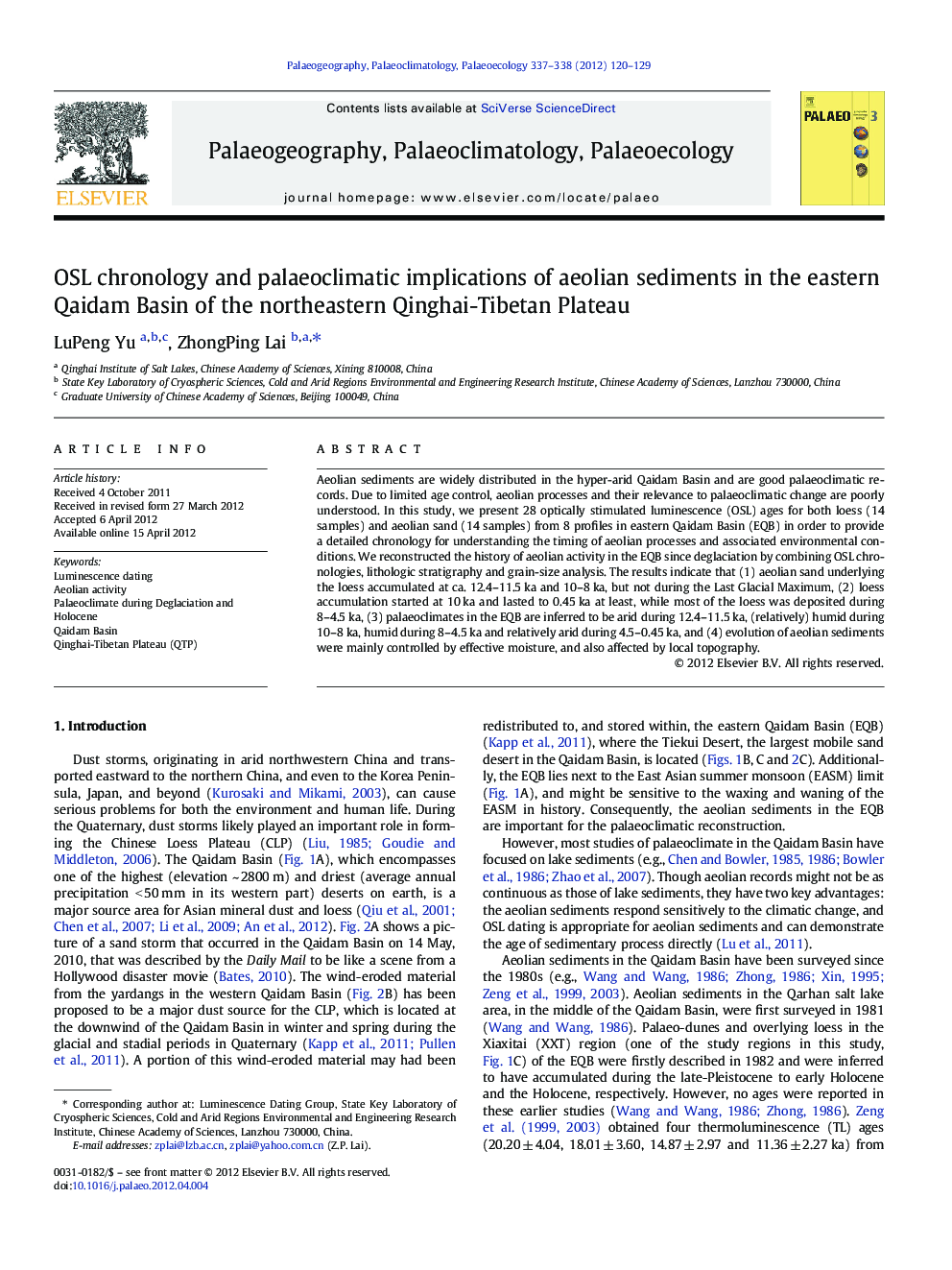| کد مقاله | کد نشریه | سال انتشار | مقاله انگلیسی | نسخه تمام متن |
|---|---|---|---|---|
| 4466914 | 1622231 | 2012 | 10 صفحه PDF | دانلود رایگان |

Aeolian sediments are widely distributed in the hyper-arid Qaidam Basin and are good palaeoclimatic records. Due to limited age control, aeolian processes and their relevance to palaeoclimatic change are poorly understood. In this study, we present 28 optically stimulated luminescence (OSL) ages for both loess (14 samples) and aeolian sand (14 samples) from 8 profiles in eastern Qaidam Basin (EQB) in order to provide a detailed chronology for understanding the timing of aeolian processes and associated environmental conditions. We reconstructed the history of aeolian activity in the EQB since deglaciation by combining OSL chronologies, lithologic stratigraphy and grain-size analysis. The results indicate that (1) aeolian sand underlying the loess accumulated at ca. 12.4–11.5 ka and 10–8 ka, but not during the Last Glacial Maximum, (2) loess accumulation started at 10 ka and lasted to 0.45 ka at least, while most of the loess was deposited during 8–4.5 ka, (3) palaeoclimates in the EQB are inferred to be arid during 12.4–11.5 ka, (relatively) humid during 10–8 ka, humid during 8–4.5 ka and relatively arid during 4.5–0.45 ka, and (4) evolution of aeolian sediments were mainly controlled by effective moisture, and also affected by local topography.
► We obtained 28 OSL ages for aeolian deposits in the eastern Qaidam Basin.
► Sand deposition started during the deglaciation at ca. 12.4 ka and lasted to 8 ka.
► Loess deposition started at ca. 10 ka with major representation between 8 and 4.5 ka.
► Loess deposition from 10 to 4.5 ka indicates a more humid early and mid-Holocene.
► The climate was drier in the late Holocene between 4.5 and 0.45 ka.
Journal: Palaeogeography, Palaeoclimatology, Palaeoecology - Volumes 337–338, 15 June 2012, Pages 120–129